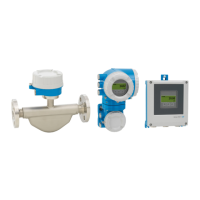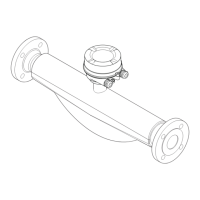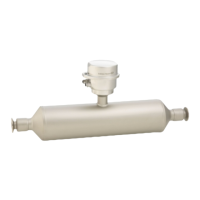Proline Promass F 500 Modbus RS485 Installation
Endress+Hauser 25
6.1.2 Requirements from environment and process
Ambient temperature range
Measuring device Non-Ex –40 to +60 °C (–40 to +140 °F)
Ex ec, NI version –40 to +60 °C (–40 to +140 °F)
Ex ia, IS version • –40 to +60 °C (–40 to +140 °F)
• Order code for "Test, certificate", option JP
–50 to +60 °C (–58 to +140 °F)
• Order code for "Test, certificate", option JQ
–60 to +60 °C (–76 to +140 °F) (sensor)
–50 to +60 °C (–58 to +140 °F) (transmitter)
Readability of the local display –20 to +60 °C (–4 to +140 °F)
The readability of the display may be impaired at temperatures outside
the temperature range.
‣
If operating outdoors:
Avoid direct sunlight, particularly in warm climatic regions.
You can order a weather protection cover from Endress+Hauser : → 178
System pressure
It is important that cavitation does not occur, or that gases entrained in the liquids do not
outgas.
Cavitation is caused if the pressure drops below the vapor pressure:
• In liquids that have a low boiling point (e.g. hydrocarbons, solvents, liquefied gases)
• In suction lines
‣
Ensure the system pressure is sufficiently high to prevent cavitation and outgassing.
For this reason, the following mounting locations are recommended:
• At the lowest point in a vertical pipe
• Downstream from pumps (no danger of vacuum)
A0028777
Thermal insulation
In the case of some fluids, it is important that the heat radiated from the sensor to the
transmitter is kept to a minimum. A wide range of materials can be used for the required
insulation.
NOTICE
Electronics overheating on account of thermal insulation!
‣
Observe maximum permitted insulation height of the transmitter neck so that the
transmitter head is completely free.
NOTICE
Danger of overheating with insulation
‣
Ensure that the temperature at the lower end of the sensor housing does not exceed
80 °C (176 °F)

